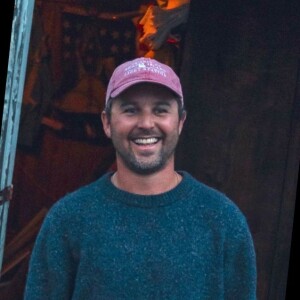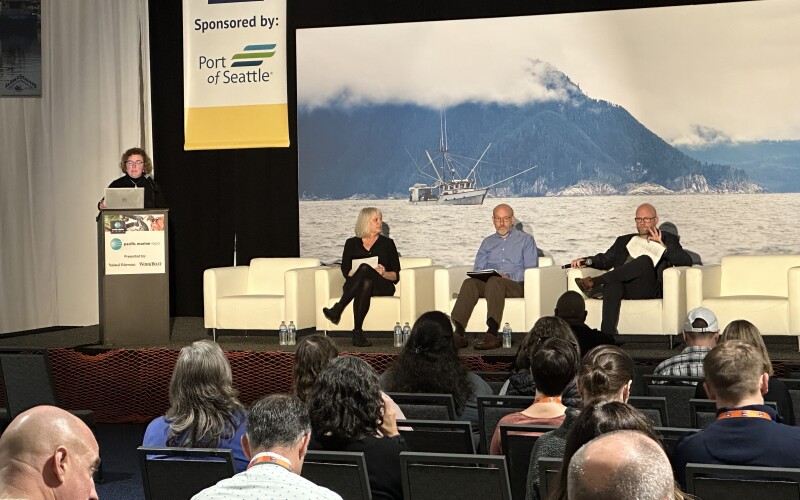The Pacific Marine Expo kicked off its second day with an educational session, “Alaska Fisheries: Separating fact from fiction.” The panel was moderated by Kate Naughten, Director of Communications at the National Oceanic and Atmospheric Administration (NOAA). Panelists included Janet Coit, Assistant Administrator at NOAA, Robert Foy, Ph.D., Director of AK Fisheries Science Center (NOAA), and Jon Kurland, Alaska Regional Administrator (NOAA).
Naughten addressed the crowd, “We’re going to start on the present state of Alaska fisheries, the future of the stocks that are in flux, management responses to the changes of climate and markets, how climate change has impacted Alaska’s markets and ecosystems and how that affects fisheries, and the impact of extreme events on stocks that were already in decline and recent increases in recruitment.”
Janet Coit was the first to speak, expressing her sincere appreciation for getting to work with the members of the fishing community who share a love for the ocean. She emphasized NOAA’s national seafood strategy, launched last summer, which is meant to put in one place the administration’s commitment to fisheries and to demonstrate their priorities moving forward. “Events like this are really important to me, and they provide an opportunity for me to hear from and learn from the fishing industry and to talk about our mutual priorities, the challenges, and opportunities before us.” She continued, “The seafood sector supports over 1.2 million jobs, and generates $165 billion in sales in seafood across the broader economy,” Coit said. “Our nation harvests and farms about 10 billion pounds of seafood annually, with a dockside value of over $6 billion.”
The panel then transitioned to a discussion format, where Naughten asked panelists about the current conditions they are witnessing, “What are you seeing on the ground in the water right now?”
“So we’ll be here for a few hours to talk about what we’re seeing in the environment and what’s changing right now,” Foy joked to the crowd. He continued,“In general, all the food and energy in the system starts with phytoplankton. Those numbers are still extremely depressed, and they have been since 2019. That means the amount of food to start with, the carrying capacity of our oceans right now, is still at the lowest levels it has been in decades. Having said that, there’s good news, we’re seeing increases in the number of the next step up, the zooplankton.”
Foy touched on the current trends in pollock, crab, and salmon stocks, and that all this information is available in a 250-page Ecosystem Status Report that NOAA distributes annually.
Jon Kurland also addressed fishery populations. “There are always fluctuations, there are always ups and downs, but what happens when those changes are more dramatic?” Kurland asked the crowd, speaking to non-stationarity and the relationship between environmental variables not following familiar patterns, which can be disconcerting. Despite these variables, he ended on a plus.
“Make no mistake, Alaska is still a seafood powerhouse. Alaska is still the model for sustainable fishery management both for the nation and for the world.”







